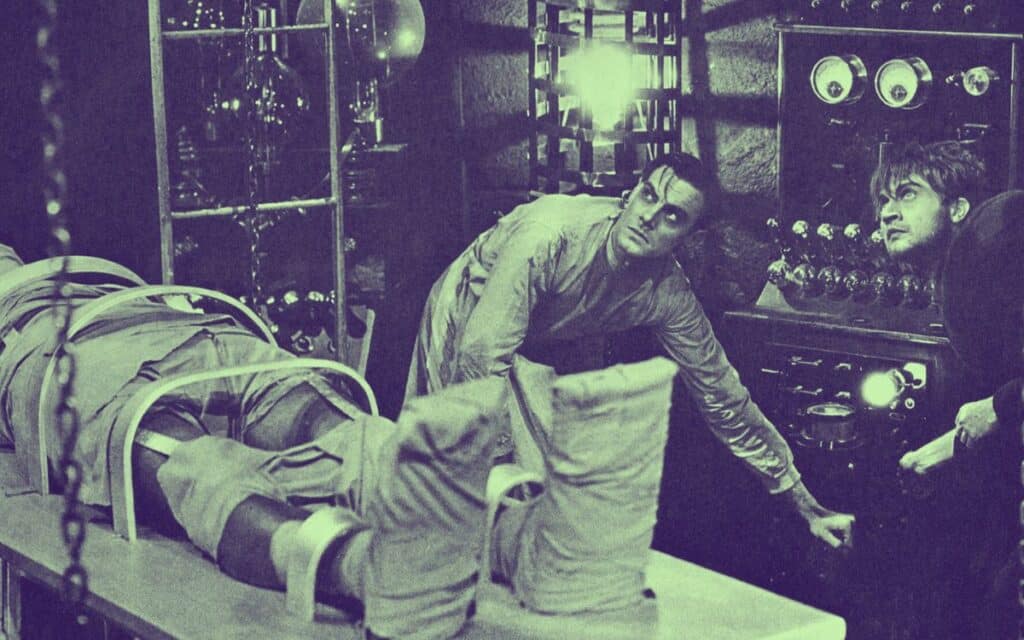Mary Shelley’s Frankenstein explores ambition, isolation and human nature’s dark side, offering profound life lessons. WILLIAM BOVE explains why it’s his favourite Gothic novel

I love this novel so much. Frankenstein is my favourite Gothic novel of all time. I cherish its symbolism, rich expression, creative beauty, humanistic value and its gargantuan warnings about the darker side of life and humanity.
Mary Shelley, the author, is one of my favourite Gothic Horror/Gothic Romantic writers. She is also one of my favourite authors in history. Mary Shelley is an incredible treasure, not just as a woman, but as a human being — one of the best we’ve ever had.
Mary was a teenager when she delivered this horrific story, born from a terrible phantasm in a vision. One dreary and stormy night in Switzerland, at the Villa Diodati, Mary began the story at 18. Frankenstein was first published anonymously when she was 19. At first, Mary went along with societal expectations of women as authors. At the time, it was accepted, albeit a dreadful idea, that a woman wouldn’t be accepted as a serious writer, especially one as young as she.
In its second publication in Paris in 1823, Mary’s name appeared as the author, with Percy Shelley (her husband) writing the foreword. Because of this, many believed Percy had written the novel.
Mary Shelley is hailed as the “mother of modern science fiction”. But she didn’t just write the first science fiction novel; she also created a new genre by combining Gothic Horror with science fiction — a genre and sub-genre that the world has enjoyed ever since.
Her work is filled with horror, terror, and ghastly visions so dreadful that they haunt the reader long after the book is closed. This is Mary Shelley’s legacy, her beautiful promise to us as one who truly lived in the heart of horror, terror, and romanticism. Frankenstein has always spoken to me. It inspires my imagination, nourishes my spirit, and feeds my soul.
There are many essential aspects of being human. Belief in oneself and in something greater than oneself emerges as the soul of who we are and what we are meant for. We have a primal need not to serve what is greater, but to connect with it, to know it, and to use that knowledge to improve our lives and connect with the world and the people around us.
These are the ideals of Victor Frankenstein, a man who sought to discover something more than this world. His reach, however, exceeded his grasp, and his discovery transformed into a horror beyond his wildest dreams.
Victor soon realises the true terror of his creation — a being with its own mind, will, and desires. Rejected by society and deprived of love and companionship, the creature turns to hatred, with Victor and his loved ones caught in its path.
The loneliness of the creature is haunting, and its tireless devotion to punishing its creator for its wretched existence is chilling. Victor, who intended to revolutionise life itself, watches in horror as his greatest ambition turns into his worst nightmare. He abandons his creation, hoping it will disappear, but the creature finds its way into the world, seeking connection and repeatedly being met with rejection and fear.
After enduring too much isolation and hatred, the creature vows revenge. It strikes a deal with Victor — if Victor creates another being like him, he will leave humanity in peace. Reluctantly, Victor agrees, but first, he falls ill, delaying his work.
As Victor’s wedding to Elizabeth approaches, his fears intensify. On the night of the wedding, the creature kills Elizabeth, strangling her to death. This act of revenge spirals into further tragedy, as Victor resurrects Elizabeth, creating another undead being like his first creation.
Upon her resurrection, Elizabeth realises the horror of her existence. In anguish, she ends her life by setting herself on fire. Victor’s family is decimated — his mother, little brother William, and his close friend Henry Clerval are all dead. His father dies from grief, leaving Victor alone, haunted by the loss of everyone he loved.
The creature, too, chooses to end its life by fire, following Victor’s death.
Frankenstein teaches profound lessons about abandonment, family, parenting, and the importance of love over ambition. It serves as a cautionary tale about the dangers of reckless ambition, highlighting that creativity, inspiration, and intellectual expression must be tempered with patience, love, and humanity.
The symbolism and allegory in Frankenstein are unparalleled, matched only by the works of Edgar Allan Poe and Bram Stoker. Together, these three authors have gifted us a love for life, and for the living soul, through the lens of horror, terror, and romanticism.
The novel is told in an epistolary format, through letters and diary entries, offering multiple perspectives. This structure allows readers to interpret the story in various ways and take its lessons into their own lives.
Two interesting facts about Frankenstein and Mary Shelley:
- In 1831, a play titled Presumption: The Fate of Frankenstein helped solidify the story’s growing popularity.
- It’s believed Mary Shelley wrote the novel after experiencing personal tragedy. Following the death of her newborn daughter, she had a dream where she rubbed her baby by the fire and brought her back to life, only to wake and realise there was no baby.
As I said, I love this novel, and I will always love the work of Mary Shelley with all my heart and soul.
Do you love Mary Shelley’s Frankenstein? Tell us your thoughts in the comments section below!







